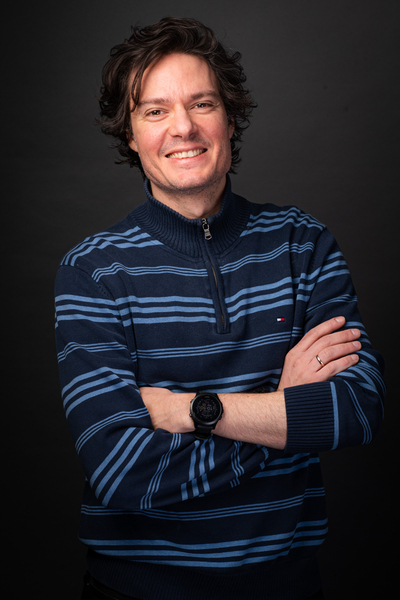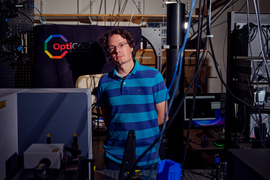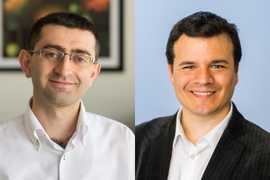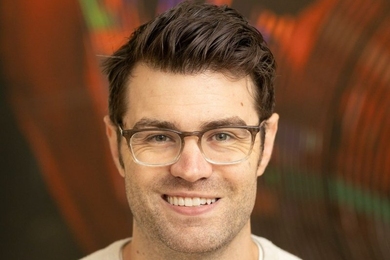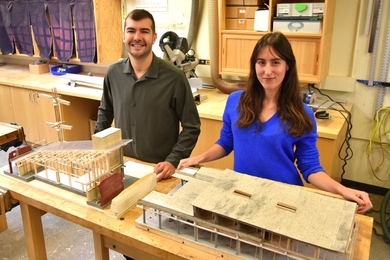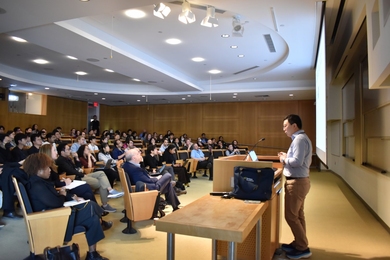MIT associate professor of physics Riccardo Comin has been selected as 2025 Experimental Physics Investigator by the Gordon and Betty Moore Foundation. Two MIT physics alumni — Gyu-Boong Jo PhD ’10 of Rice University, and Ben Jones PhD ’15 of the University of Texas at Arlington — were also among this year’s cohort of 22 honorees.
The prestigious Experimental Physics Investigators (EPI) Initiative recognizes mid-career scientists advancing the frontiers of experimental physics. Each award provides $1.3 million over five years to accelerate breakthroughs and strengthen the experimental physics community.
At MIT, Comin investigates magnetoelectric multiferroics by engineering interfaces between two-dimensional materials and three-dimensional oxide thin films. His research aims to overcome long-standing limitations in spin-charge coupling by moving beyond epitaxial constraints, enabling new interfacial phases and coupling mechanisms. In these systems, Comin’s team explores the coexistence and proximity of magnetic and ferroelectric order, with a focus on achieving strong magnetoelectric coupling. This approach opens new pathways for designing tunable multiferroic systems unconstrained by traditional synthesis methods.
Comin’s research expands the frontier of multiferroics by demonstrating stacking-controlled magnetoelectric coupling at 2D–3D interfaces. This approach enables exploration of fundamental physics in a versatile materials platform and opens new possibilities for spintronics, sensing, and data storage. By removing constraints of epitaxial growth, Comin’s work lays the foundation for microelectronic and spintronic devices with novel functionalities driven by interfacial control of spin and polarization.
Comin’s project, Interfacial MAGnetoElectrics (I-MAGinE), aims to study a new class of artificial magnetoelectric multiferroics at the interfaces between ferroic materials from 2D van der Waals systems and 3D oxide thin films. The team aims to identify and understand novel magnetoelectric effects to demonstrate the viability of stacking-controlled interfacial magnetoelectric coupling. This research could lead to significant contributions in multiferroics, and could pave the way for innovative, energy-efficient storage devices.
“This research has the potential to make significant contributions to the field of multiferroics by demonstrating the viability of stacking-controlled interfacial magnetoelectric coupling,” according to Comin’s proposal. “The findings could pave the way for future applications in spintronics, data storage, and sensing. It offers a significant opportunity to explore fundamental physics questions in a novel materials platform, while laying the ground for future technological applications, including microelectronic and spintronic devices with new functionalities.”
Comin’s group has extensive experience in researching 2D and 3D ferroic materials and electronically ordered oxide thin films, as well as ultrathin van der Waals magnets, ferroelectrics, and multiferroics. Their lab is equipped with state-of-the-art tools for material synthesis, including bulk crystal growth of van der Waals materials and pulsed laser deposition targets, along with comprehensive fabrication and characterization capabilities. Their expertise in magneto-optical probes and advanced magnetic X-ray techniques promises to enable in-depth studies of electronic and magnetic structures, specifically spin-charge coupling, in order to contribute significantly to understanding spin-charge coupling in magnetochiral materials.
The coexistence of ferroelectricity and ferromagnetism in a single material, known as multiferroicity, is rare, and strong spin-charge coupling is even rarer due to fundamental chemical and electronic structure incompatibilities.
The few known bulk multiferroics with strong magnetoelectric coupling generally rely on inversion symmetry-breaking spin arrangements, which only emerge at low temperatures, limiting practical applications. While interfacial magnetoelectric multiferroics offer an alternative, achieving efficient spin-charge coupling often requires stringent conditions like epitaxial growth and lattice matching, which limit material combinations. This research proposes to overcome these limitations by using non-epitaxial interfaces of 2D van der Waals materials and 3D oxide thin films.
Unique features of this approach include leveraging the versatility of 2D ferroics for seamless transfer onto any substrate, eliminating lattice matching requirements, and exploring new classes of interfacial magnetoelectric effects unconstrained by traditional thin-film synthesis limitations.
Launched in 2018, the Moore Foundation’s EPI Initiative cultivates collaborative research environments and provides research support to promote the discovery of new ideas and emphasize community building.
“We have seen numerous new connections form and new research directions pursued by both individuals and groups based on conversations at these gatherings,” says Catherine Mader, program officer for the initiative.
The Gordon and Betty Moore Foundation was established to create positive outcomes for future generations. In pursuit of that vision, it advances scientific discovery, environmental conservation, and the special character of the San Francisco Bay Area.
